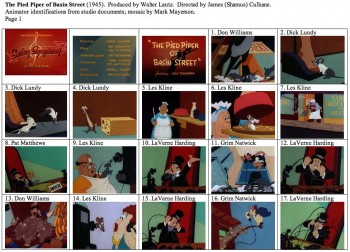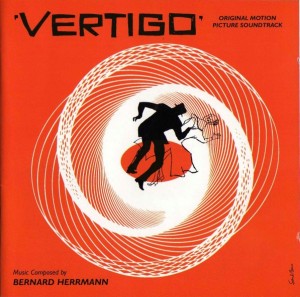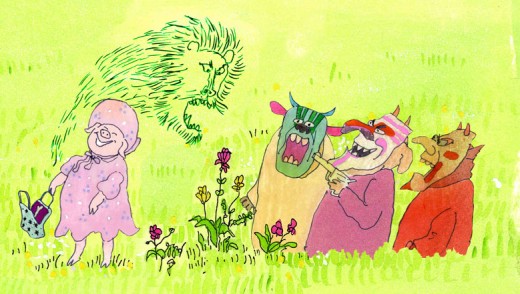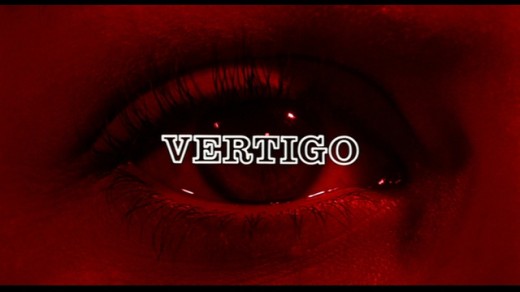Commentary 05 Nov 2011 07:07 am
Bobbing for Apples
- My studio is dead center for the Halloween Parade. That was last Monday, the beginning of the week. This is a day to get out of the area. The parade starts at 6pm, and I was out of here by 5. By then the nearest subway station was closed off, so I had to go across town (about 8 city blocks) to catch an East side train to go home. Crossing 6th Avenue, was a nightmare in that the police had blocked off the sidewalk making it hard to get into the street. Then, once across, there were hundreds of people walking in the opposite direction of me. They were coming toward the parade; I was leaving it.
The next morning there was a lot of water gathered at the foot of the stairs/entrance to my studio. It turns out at 1am, at the last minute of the parade, my superintendent had caught three female teenagers urinating at the half-hidden location outside the closed gate. He chased them away then threw bleached water to clean up after them. The water hadn’t dried in the morning.
What does this have to do with animation? The problem is that when you have your own studio you deal with so much more crap than actually doing animation. It’s the endless paperwork, phone calls, sales reps trying to sell you everything from software to paper clips to copier/scanners. It’s the balancing the books and paying the bills and still trying to get the work in shop to keep the overhead over head.
I wish I had a bit more time for the artwork. The studio doesn’t pay enough to have a lot of helpers doing some of these tasks. I think that’s why I’ve been reading about all the early days of Disney, lately. It’s fun hearing about some of the hardship he had to go through prior to making it big. For some reason those have always been the books I prefer reading.
There’s that Walter Lantz book by Joe Adamson where Lantz almost goes bankrupt and has to make a few shorts at his own expense to keep the product rolling.
There’s the Tim Susanin Walt Before Mickey book that counts every nickel and dime as Disney tries to get on solid ground only to have all his workers plot against him so that they could be the bosses.
There are a number of these books, and I love them all.
.

.
On Thursday, I’d posted a review of the 1957 biography, The Story of Walt Disney, by his daughter, Diane Disney Miller (aged 23 at the time) “as told to Pete Martin.” It’s an entertaining read if you’re interested in Uncle Walt, though I’m not so confident in the accuracy of all the history.
.
You can read the first chapter in the Saturday Evening Post edition I posted a couple of years ago. The magazine serialized some of the book prior to its publication.
.
.
- In today’s New York Times, Jeff Scher has a new animated piece on the Op Ed page. Focus is an “abstract expression of the New York marathon” (which will take place tomorrow.) Jeff brilliantly manipulates footage of the runners and the bystanders (or is it the “standers by”?) to a tightly driven two minute piece. The fine music is by the extraordinary Shay Lynch.
.
.

Was this the first mosaic?
Hans Perk on his site A Film LA has begun to post the animator drafts for Disney’s Ichabod and Mr. Toad. This blog is one of the great resources for animators on the web.
.
Sanek has begun taking Hans Perk’s copy of the draft and translating it into Mosaics. (I believe and assume that it was Mark Mayerson who coined the title “Mosaic” when he began doing these visual displays of the Disney drafts back in 2006. Now it’s an international word understood by all in the animation blogosphere. Sort of like the word “blogosphere.”)
.
Karl Cohen of ASIFA SF had sent me the link to an animated music video which used animated jelly beans as the medium of choice. It should have been plenty that that was labor intensive enough, but the film makers chose to combine a live actor in with the jelly beans. You can go here to see the video as well as a making-of video (which I found more interesting to watch.)
.
___________________________
- This past week, John Lasseter answered questions for readers in the NYTimes. There were either no hard ball questions, or the Times didn’t give them to Lasseter. A blah interview with questions like this:
- Q. Is it possible there will be a sequel to “Finding Nemo†someday? (G. W. German, Port Townsend, WA) One of my favorite PIXAR films is “The Incredibles,†are you going to make a sequel in the near future? If not, why? (Quinn F, Mount Vernon, NY)
A. We don’t know yet. The only reason we do a sequel at Pixar is if we come up with a great story that is as good or better than the original. So it lands on the shoulders of the director that created the original to be the seed, you might say, for these things. We may, we may not. It depends on if we come up with a great story.
I guess the director of Cars 2 thought he came up with a good story.
.
On Monday, Nov. 14th, the Museum of Modern Art in conjunction with the Motion Picture Academy (AMPAS) are presenting a program of film titles by Saul Bass. This includes a new restoration of Why Man Creates.
Go to the link to buy tickets in advance.
And speaking of Vertigo, I saw the feature film, The Artist, last night. It was a silent film done this year and about to be released by the Weinstein Company. This was a very sweet and romantic film. I’d recommend it highly.
 As a silent film it had a full blown score by Ludovic Bource. This was an equally romantic pastiche of music for film. However, the highlight of the sound track was the 7-10 minutes of the score to Vertigo by the brillliant Bernard Herrmann as conducted by Elmer Bernstein. Loving this original score and having memorized it, I was jolted to hear it pop up in this new film. It was used, intact, for the climax of The Artist. Suddenly we went from a good film score to a great score. It truly showed the power of Herrmann’s work. Unfortunately, for Ludovic Bource, I spent the rest of the evening humming Bernard Herrmann’s melody. I wonder if this, in any way, disqualifies the film for nomination for the score. (You can hear the original Herrmann cue here.)
As a silent film it had a full blown score by Ludovic Bource. This was an equally romantic pastiche of music for film. However, the highlight of the sound track was the 7-10 minutes of the score to Vertigo by the brillliant Bernard Herrmann as conducted by Elmer Bernstein. Loving this original score and having memorized it, I was jolted to hear it pop up in this new film. It was used, intact, for the climax of The Artist. Suddenly we went from a good film score to a great score. It truly showed the power of Herrmann’s work. Unfortunately, for Ludovic Bource, I spent the rest of the evening humming Bernard Herrmann’s melody. I wonder if this, in any way, disqualifies the film for nomination for the score. (You can hear the original Herrmann cue here.)



on 05 Nov 2011 at 9:22 am 1.David Nethery said …
The questions the Times finally chose to address to John Lasseter did seem sort of blah.
I noticed that there were several questions posted in the weeks prior that were asking about whether the Disney studio still supported hand-drawn animation and if anything was in active development.
This is the one that the Times chose to put in front of Mr. Lasseter:
QUESTION:
“In the documentary “The Pixar Story,†many of the Pixar animators and directors interviewed lamented the decline of hand-drawn animation as a result of the popularity and ubiquity of computer animation. Is there any thought of Pixar developing projects using hand-drawn animation either on its own or used in tandem with computer animation?”
— Lisa, East Windsor, NJ
ANSWER:
“In overseeing both Disney and Pixar Animation, each studio has a unique culture. A studio is not its building, it’s its people. They’re both filmmaker-led studios. At the Walt Disney Animation Studios, there is tremendous history and heritage. Of course it’s the studio that Walt Disney opened in 1923, and it’s never closed its doors. The studio has always made animation, and it really invented long-form animation. Hand-drawn animation is the heritage at that studio, and we’re continuing hand-drawn animation with “The Princess and the Frog†and “Winnie the Pooh.†We’re developing these really interesting techniques using hand-drawn animation, along with 3D computer animation.
Whereas Pixar invented much of computer animation, and it’s so steeped in that technology, and that’s who we are. Everything that Pixar has done, no one’s done before. We keep pushing the technology. The developments are always because of the needs of our stories.
Hand-drawn animation lives within the Walt Disney Animation Studios, and Pixar will continue focusing on what we’ve always done, which is amazing 3-D computer animation.”
Not much more is revealed about what’s actually going on with development of hand-drawn projects than most of us (in the animation community) already knew, but I suppose that is to be expected since the article is aimed at the general public.
So, John Lasseter says Disney is “developing these really interesting techniques using hand-drawn animation, along with 3D computer animation.”
I guess we’ll just have to wait and see what that means.
on 05 Nov 2011 at 9:41 am 2.David Nethery said …
“The Artist” looks really interesting. Hope it plays near me. Our one and only “art house” theater in Orlando , the Enzian Theater, will probably get it eventually. They play a good variety of films , both recent and classic. Saw “The Tree Of Life” there , and also was happy to see a 35 mm print of Duck Soup there recently , and they just ran Disney’s Ichabod & Mr. Toad last Sunday, I guess sort of in relation to Halloween because of the Headless Horseman sequence , but I’ll take it for whatever reason. Sure I have “Duck Soup” on DVD , but watching these movies in a theater full of people and listening to the reactions and laughter is such a great experience , so much more than sitting at home watching it on a television or computer monitor.
But I digress …
The score does sound like a real pastiche. Do they really use “Sing, Sing, Sing” in the actual movie as they do in the trailer ? The movie is set in 1929 , but “Sing, Sing, Sing” wasn’t written until 1935 (by Louis Prima). And then suddenly there’s an extended section from the Vertigo score at the end … hmmmmm… I don’t know what effect that will have on me. I love the Vertigo score , but I think hearing it suddenly appear in a different movie might jolt me out of the movie . But the trailer had me hooked, I will definitely see it. Thanks for making me aware of it as I had not heard of “The Artist” before.
on 05 Nov 2011 at 10:44 am 3.Michael said …
“The Artist” begins in 1927 and takes us through 1934 – or was it 1935? I don’t remember if “Sing Sing Sing” is in there, but there are quite a few song tunes played in the film.
The score sounds very lush, European. It was recorded in Belgium, but reminds me of some of the Hungarian scores performed in the recent past. A bit too lush, a bit too overdone. The Herrmann music definitely pulled me out. I was watching too closely to see if it was appropriate to the action. It did work very well. I got the feeling that they probably temp-tracked the film with the cue and decided not to change it. Not many composers could come up with better.
It’s very well photographed and acted, though I had personal difficulties with the lead. He was a bit too ingratiating for my taste, which made him perfect as a silent film lead.
on 05 Nov 2011 at 10:54 am 4.David Nethery said …
“I got the feeling that they probably temp-tracked the film with the cue and decided not to change it. “
I bet you’re correct on that. I’ve worked on movies where the temp-tracks taken from classic film scores were so good that it felt “wrong” somehow when I saw the final cut with the final music. But I’m a little surprised they were able to get the rights to use Herrmann’s Vertigo score in the final cut.
on 05 Nov 2011 at 11:11 am 5.Mark Mayerson said …
I’m obviously biased towards my own approach, but while the mosaics are handy in that it’s easier to connect an animator with a shot visually than by reading the draft, I feel that creating them is just drudgery. The real value for me when I do them is watching the film closely and analyzing it. That’s why I attempt some sort of commentary with each mosaic entry.
I think it helps that I’ve animated and directed, as I hope I see things that other people might not.
on 05 Nov 2011 at 2:27 pm 6.Hans Perk said …
It is certainly true that Mark’s commentary to his great mosaics added a lot to the deeper understanding of the films in question for me.
I do understand that for many the mosaics themselves are an easy way into the matter than the “raw” drafts. Then again, there would be those who prefer the comic book version of War and Peace (I bet there is one). That said, the mosaics are pretty ideal for quick and easy reference if prepared objectively and scholarly.
Sitting down with the drafts while studying the movie must be the method of choice, and I am happy to note that I have a few readers who clearly do this – who then leave comments that at times also show new, deeper insights.
I myself am very happy to be able to share the documents that give credit where it’s due (if indeed correct), which may teach us about the capabilities and styles of many animators whose names would otherwise just be footnotes in animation history.
on 05 Nov 2011 at 4:43 pm 7.Michael said …
Something I’ve also mentioned to you Mark, is that the choice of the frame grab to represent the scene is no easy matter. You always seem to choose perfectly, always an extreme pose and something that synthesizes the animator’s work. Your knowledge of animation helps make your mosaics superior to others’ (certainly they’re better than mine!)
I do find when doing it that I spend a lot of time with the film really looking at the animation and knowing who did what helps ME immensely. Or at least it gives me a lot of satisfaction in studying the scenes.
on 06 Nov 2011 at 2:30 pm 8.Eddie Fitzgerald said …
Regarding the downside of running your own company: I greatly admire creative people who do that. There must be days when you envy the artists who work for you. They get to have all the fun, and even have a life when the work is done.
Thank Goodness there are some people who are willing to take on the burden of responsibility and risk.
on 06 Nov 2011 at 11:06 pm 9.BennyZ said …
I adore Herrmann’s music, especially the Vertigo score, which would be my pick for the greatest movie score in history, but credit where credit is due- the theme is very similar (no doubt intentionally so) to the Liebestod from Wagner’s “Tristan & Isolde”. Since that piece is about love and death and the intertwining of the two, the reference is thematically relevant. But its also an astonishingly powerful piece of music that builds to an explosive climax.
The “Liebestod” is the finale of the opera, but the basic themes of the music build throughout the entire opera. Each time the melody plays, it gets a little bit closer to the orgasmic release in the climactic high note that resolves the melody, but for nearly five hours, it pulls back before finally getting there. Until the very end, and the effect of that long awaited, much anticipated, and very much needed resolution and release is quite an experience.
Very much looking forward to “The Artist”
on 29 Dec 2014 at 4:44 pm 10.Ilmu Pelet said …
Good results to your web site, My spouse and i examine several articles or blog posts with your Stus as well as We has been impressed by simply the things that an individual talked about, is incredibly helpful in addition to helpful whatsoever for folks similar to me that are often looking for the most recent details in addition to the grade of lifetime positive aspects for that area. once more thank you very much.